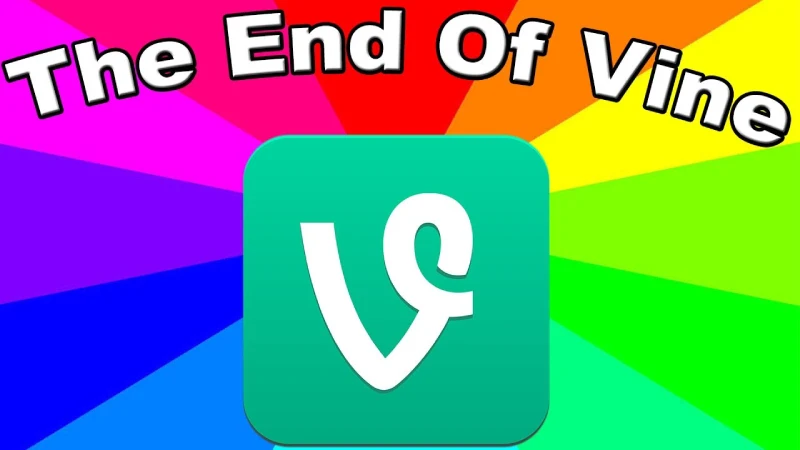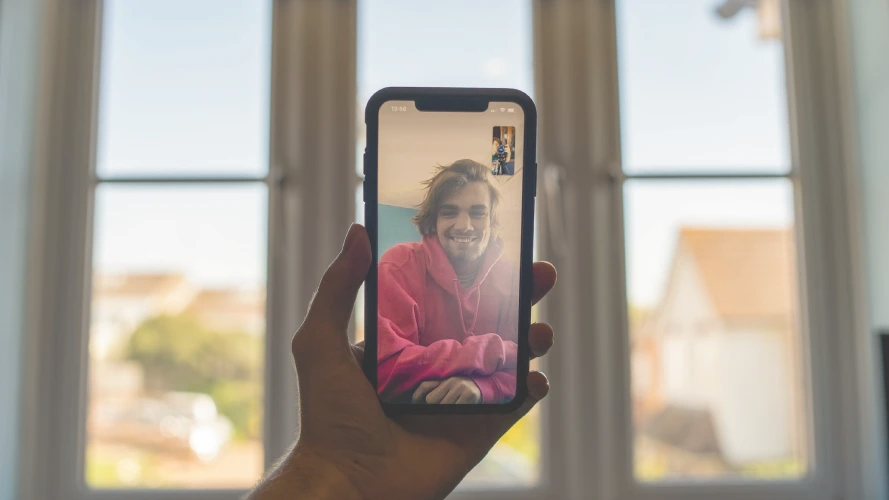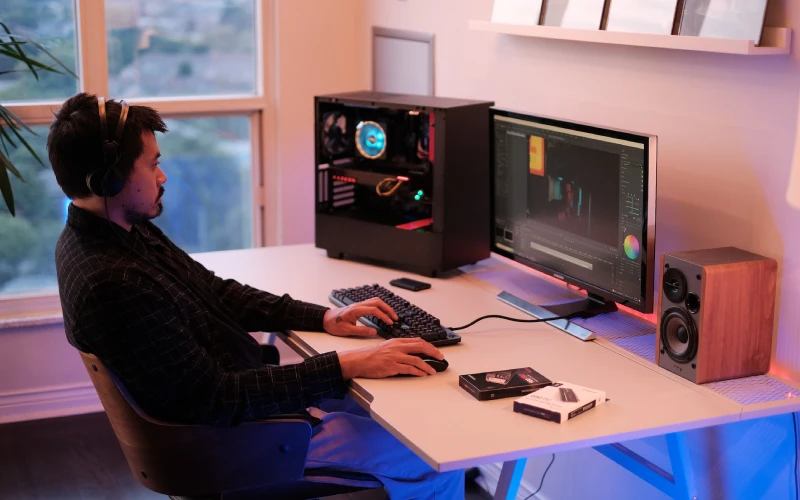Vine Shut Down: A Look Back at the Social Media Platform’s Impact
15 min read
Table of Contents
Overview of Vine and its origins:
Vine, the social media platform and user friendly app known for its six-second videos, was a game-changer in the world of internet culture. However, in 2016, the platform was shut down, leaving its users, creators, and fans in shock. In this article, we’ll take a look back at Vine’s impact and examine the reasons for its shut down.
When Vine first launched in 2013, it opened up a world of creative possibilities. Its unique six-second format challenged the traditional way of creating video content and it became a breeding ground for memes and cultural moments. Creators like Zach King, Amanda Cerny, and Logan Paul became household names thanks to Vine.

However, as with any new platform, monetization was a challenge for Vine. Creators had limited options for monetizing their content, which made it difficult for them to make a living from their work. Additionally, as competition from other platforms like Instagram and Snapchat increased, Vine struggled to attract and retain users.
The platform also faced challenges internally, with employee turnover and a lack of strategic benefits for Twitter, which acquired Vine Labs in October 2013. Twitter’s own struggles to grow its user base and monetize its platform made it difficult to give Vine the resources it needed to grow and compete.
As time went on, Vine struggled to keep up with the bells and whistles of other platforms and it didn’t had enough to offer to stand out in the market. The introduction of new features and tools like live streaming and editing tools on Instagram and Snapchat made Vine’s offering seem dated and less appealing.
Despite these challenges, Vine’s impact on internet culture cannot be denied. The platform helped to establish the idea of “micro-entertainment” and it was a creative tool for many, leading to the development of a new ecosystem of young stars and serving as a launchpad for many creators’ careers. Additionally, the memes and comedic videos born on Vine continue to be relevant today.
In conclusion, Vine was a unique and innovative social media platform that had a significant impact on internet culture. However, the platform struggled with monetization, competition, and internal issues, ultimately
However, Vine shut down in October 2017 due to a number of issues, including failure to monetize, increasing competition, employee turnover, and concerns within parent company Twitter.
Explanation of the decision to shut down Vine:

The decision to shut down Vine was made by the parent company, Twitter, in 2016. The company cited a decline in user engagement as the primary reason for the shutdown. As user engagement on Vine began to decline over time, the platform struggled to attract new users, and it eventually became more difficult to retain existing ones.
Another reason for the decision to shut down Vine was the emergence of other platforms like TikTok, which offered similar functionality and had a larger user base. With more options available to users, it became increasingly difficult for Vine to attract and retain users, which made it more difficult for the platform to generate revenue and sustain itself.
Furthermore, the platform faced intense competition from other platforms like YouTube and Instagram, which also offered similar functionality and had a much larger user base. With so much competition, it became harder for Vine to stand out and attract users.
Additionally, Twitter was facing financial difficulties and they had to make some cost-cutting decisions. Shutting down Vine, which was not as profitable as other parts of the company, was one way of cutting costs.
Overall, the decision to shut down Vine was made due to a combination of declining user engagement, emergence of new competitors, financial difficulties of the parent company and the difficulty of standing out among the other platforms with similar functionality and larger user bases.
The Rise of Vine
Early days and user adoption:

In the early days of Vine, user adoption of the app was extremely rapid. The app was launched in 2013, and it quickly gained popularity, particularly among younger users. This was due to a combination of factors, including its unique six-second format, which made it easy to consume and share short, looping video clips. Additionally, the app’s community-based nature made it easy for users to discover new content and connect with others who shared their interests.
Vine also had a strong viral component to it, people were eager to share the funny and creative videos they saw with their friends and family, and this helped to attract new users. Additionally, Vine’s integration with Twitter made it easy for users to share their videos with a larger audience and attract more followers.
Vine’s initial success also came from the fact that it was one of the first social media platforms that truly leveraged the power of mobile devices’ cameras to create and share videos in a very accessible way. This was something new and unique and it caught the attention of many users.
Overall, the early days of Vine were characterized by rapid user adoption, a strong viral component, and a unique format that made it easy to consume and share video content. These factors helped to make Vine one of the most popular social networks in a short amount of time.
Growth of the platform and popular use cases:

As Vine grew in popularity, it began to see a wide variety of use cases and content. Some of the most popular use cases included:
- Comedy: Vine became a popular platform for comedians and comedy content. Many comedians and comedy groups found an audience and built a fanbase on Vine, and several comedians credit Vine as the starting point for their career.
- Music: Vine also became a popular platform for musicians and music content. Musicians used Vine to share clips of live performances, music videos, and behind-the-scenes footage. Many of them found new fans and following through the platform, and it also helped to raise awareness of their music.
- News and events: Vine became a popular platform for sharing news and current events, particularly breaking news and live events. Many news organisations and journalists used Vine to share short clips and updates from the field.
- Brands and marketing: Vine also became a popular platform for brands and marketing. Companies began to see the potential of the platform to reach a younger audience and began to experiment with Vine ads and sponsored content.
- DIY and How-to content: Vine also became popular as a platform for DIY, cooking, beauty, and How-to videos. The six-second format was well-suited to demonstrating a quick trick or tip, which made it an appealing platform for creators of that content.
- Daily Vlogging: Vine was also used to create a new genre of vlogging, where creators documented their everyday life and shared their thoughts, which helped to create a sense of community and connection with the followers.
The platform also helped to establish the idea of “micro-entertainment” or short-form videos, which has
Key features that set Vine apart from other social media platforms:

There were several key features that set Vine apart from other social media platforms:
- Six-Second format: One of the defining features of Vine was its six-second format, which was unique at the time. This format allowed users to share short, looping video clips that were easy to consume and share, and it also led to the creation of a new type of content.
- Loop: The six-second format allowed for a looping video, a continuous play of the video as soon as it finishes, this feature was also unique at the time, and it helped to set Vine apart from other video-sharing platforms.
- Camera: Vine’s camera was integrated into the app, allowing users to quickly and easily record, edit, and share videos without leaving the app.
- Interaction: Vine allowed users to follow each other, like and comment on videos, creating a social network around shared video content. Additionally, the platform had a Discover feature that allowed users to find new and trending videos, and it also provided a way for users to search for videos and for creators to tag their videos making them easier to find.
- Twitter Integration: Vine was owned by Twitter, this allowed users to share their Vine videos on Twitter and Vine to use twitter account information to sign up and find friends to follow.
- Free: Vine was free to download and use which made it accessible to a wide audience.
These features along with the creativity and quality of the content, helped to make Vine a unique and engaging platform that stood out among other social media platforms.
Impact on the Industry

How Vine influenced the rise of short-form video content:
Vine played a significant role in the rise of short-form video content. The platform’s success helped to popularize the six-second format, and many other social media platforms, such as Vine TikTok, have since followed in Vine’s footsteps by focusing on short-form video content. Additionally, brands began to adapt to the new format, creating 6 seconds ad as part of their marketing strategies.
Changes in social media strategies of other platforms and brands:
Vine’s success also prompted other social media platforms and brands to re-evaluate their strategies. Many began to focus more on short-form video content, and some even began to experiment with the six-second format. The platform proved that short videos can be a powerful marketing tool.
Vine’s influence on Internet culture:

Vine played a significant role in shaping Internet culture. The app’s popularity helped to popularize the use of memes and Vine-style videos on other platforms. Vine also had a big influence on the way people consume and share videos online, proving that sometimes less is more.
Challenges and Decline

Vine was a popular mobile app and social network that allowed users to share short, looping video clips. The app was launched in 2013 and quickly gained popularity, particularly among younger users.
However, Vine faced several challenges in its short lifespan. One major issue was technical difficulties, such as buffering and crashing of the app. Another issue was the lack of monetization options for creators, which made it difficult for them to make a living from their content.
Another challenge was competition from other platforms, such as YouTube and Instagram, which offered similar functionality and had larger audiences. Additionally, user engagement on Vine began to decline over time as users moved to other platforms.
Despite these challenges, Vine had a significant impact on internet culture and the way we consume and share video content. Vine’s six-second format was unique and led to the creation of a new type of content, including memes, and launched the careers of many creators. However, the app could have benefited from more advanced features, better tools for creators to monetize and better handling the competition.
Technical issues and lack of monetisation options:
Vine faced several technical issues that made it difficult for users to consistently enjoy the content on the app. Some of the most common issues included buffering, crashing and bugs that made the app unstable. These technical difficulties made it difficult for users to trust the platform and ultimately, hurt the user experience.
In addition to the technical issues, Vine also struggled with a lack of monetisation options for creators. Many creators found it difficult to make a living from their content, as the app did not offer them many ways to monetize their work. While some creators were able to monetize through brand deals and sponsorships, the majority struggled to make a sustainable income from their Vine content.
This lack of monetisation options ultimately made it difficult for creators to justify the time and effort they put into creating content for the platform, and could have played a role in the platform’s decline. A lack of clear monetisation options, creates a lack of incentive for creators to continue creating content, and they eventually move to other platforms.
This lack of monetisation options, combined with technical issues, made it difficult for Vine to retain both creators and users and ultimately played a role in the platform’s decline.
Competition from other platforms
Another major challenge that Vine faced was competition from other platforms. With the emergence of platforms like YouTube and Instagram, users and creators had more options for sharing and consuming video content. These platforms offered similar functionality to Vine and had much larger audiences, which made it more difficult for Vine to attract new users and retain existing ones.
YouTube, for example, was already well-established when Vine launched, with a large user base and a wide range of content. Instagram, which launched its video feature around the same time as Vine, also quickly gained popularity among users. As a result, many creators and users began to migrate to these other platforms, where they could reach a larger audience and have more monetisation options.
The intense competition from other platforms like YouTube, Instagram and TikTok and the lack of unique features and incentives made it difficult for Vine to survive in the market and ultimately led to its decline. As creators and users migrated to other platforms, Vine struggled to attract and retain a significant user base, leading to its eventual shutdown.
User engagement decline
User engagement on Vine began to decline over time as users moved to other platforms. As the number of active users on the platform decreased, it became more difficult for the app to attract new users and retain existing ones.
One of the reasons for the decline in user engagement was the lack of new and unique content. As users and creators migrated to other platforms, the content on Vine began to feel repetitive and less engaging. Additionally, the technical issues and lack of monetisation options made it difficult for creators to justify the time and effort they put into creating content for the platform, which further contributed to a decline in new and unique content.
Another reason for the decline in user engagement was the lack of community on the platform. Without a strong community of users, it becomes harder for the platform to foster interactions and engagement among its users. As users migrated to other platforms with larger and more active communities, it became harder for Vine to build a sense of community and foster engagement among its remaining users.
Lastly, the presence of many other competing platforms with similar functionality made it difficult for Vine to attract new users and retain existing ones. With more options available to them, users were more likely to migrate to other platforms where they could find more content and a more active community.
Conclusion

In conclusion, Vine was an innovative and important platform that had a significant impact on internet culture and the way we consume and share video content. However, it ultimately struggled to overcome a number of challenges that led to its decline and eventual shutdown.
One of the major challenges that Vine faced was technical difficulties, such as buffering and crashing of the app, which made it difficult for users to consistently enjoy the content. Another issue was the lack of monetization options for creators, which made it difficult for them to make a living from their content.
The platform also struggled with competition from other platforms, such as YouTube and Instagram, which offered similar functionality and had larger audiences. Additionally, user engagement on Vine began to decline over time as users moved to other platforms.
Despite these challenges, Vine had a significant impact on internet culture and the way we consume and share video content. Vine’s six-second format was unique and led to the creation of a new type of content, including memes, and launched the careers of many creators.
In summary, Vine was an important and innovative platform that had a lasting impact on internet culture and the way we consume and share video content. However, technical difficulties, lack of monetization options and intense competition from other platforms ultimately led to its decline. Even though it’s not around anymore, the legacy of Vine and its impact can still be felt today.
Summary of Vine’s impact
Vine was an important and innovative platform that had a significant impact on internet culture and the way we consume and share video content.
One of the major contributions of Vine was its six-second format, which was unique and led to the creation of a new type of content, including memes. This format was a game-changer, it challenged the traditional way of creating video content. This innovation spurred a new creative process for the creation of video and set the foundation for other apps like TikTok.
The platform also launched the careers of many creators, including comedians, musicians, and actors. Vine helped many of them to gain fame and recognition and it opened new opportunities for them. Some of the Vine celebrities continue to have a big following in social media.
Vine also played a role in popularising the idea of “micro-entertainment” or short-form videos, which has become increasingly popular across the internet. The platform’s unique format and quick-paced content helped to pave the way for similar short-form video platforms like TikTok.
In summary, Vine was an innovative and important platform that had a significant impact on internet culture and the way we consume and share video content. Its six-second format was unique and led to the creation of a new type of content and launched the careers of many creators. Even though it’s not around anymore, the legacy of Vine and its impact can still be felt today.
Reflection on what could have been done differently
In retrospect, there are a few things that could have been done differently to help Vine succeed. One area where the platform could have improved was in offering more advanced features to improve the user experience. For example, Vine could have introduced more editing tools and options for creators to make the process of creating content more efficient and user-friendly.
Another area where Vine could have improved was in providing better tools for creators to monetize their content. The lack of clear monetization options made it difficult for creators to justify the time and effort they put into creating content for the platform. By providing more monetization options, such as the ability to sell merchandise or access to sponsored content, Vine could have helped creators make a sustainable income from their content.
Additionally, Vine could have taken more steps to better handle the competition from other platforms. For example, the platform could have introduced new features and formats to differentiate itself from competitors, or made a greater effort to attract creators and users from other platforms.
Lastly, the platform could have improved its community engagement, fostering a sense of community among its users would have helped retain users, and made the platform more appealing to new users.
Overall, while Vine did many things right, such as introducing a new format for videos and launching the careers of many creators, it ultimately struggled to overcome the lack of monetization options, technical difficulties and intense competition from other platforms.
Despite these challenges, the legacy of Vine and its impact on internet culture can still be felt today. The format of short-form videos is widely used, and many creators that got their start on Vine have gone on to have successful careers in entertainment. Vine will be remembered as a pioneer in the field of short-form videos and a platform that helped to popularize new ways of creating and consuming video content.
Frequently Asked Questions
Vine was a social media platform that allowed users to create and share short, looping videos. It was launched in 2013 and quickly gained popularity for its short, comedic videos and user-generated content.
Vine was shut down in 2016 due to a decline in user engagement and financial struggles. The company was acquired by Twitter in 2013, but was unable to compete with other video-sharing platforms such as YouTube and Instagram.
Vine played a significant role in popularizing short-form video content and introducing the concept of the “loop” to social media. It also helped to launch the careers of many internet celebrities and comedians. Additionally, it was a platform that allowed for a different type of content, Vine comedians, and Vine musicians, which was a new phenomenon in social media.
Yes, there are several platforms that have taken inspiration from Vine and offer similar features such as TikTok, Dubsmash, and Instagram Reels.
The Vine website no longer exists, but many Vine videos have been saved and can be found on other platforms such as YouTube and Instagram. Some users have also saved their own Vine videos to their personal devices.





